Andong Tourism promises an enriching cultural journey into the heart of South Korea’s traditions, and SIXT.VN is here to guide you through it seamlessly. Offering a unique blend of historical sites, serene landscapes, and authentic local experiences, Andong welcomes travelers seeking to immerse themselves in the nation’s rich heritage. Consider SIXT.VN your trusted partner for exploring cultural sites, traditional villages, and local cuisine in Andong and beyond.
1. What Makes Andong a Unique Destination for Tourism?
Andong is a unique destination due to its well-preserved traditions and historical significance. Nestled in North Gyeongsang Province, this city is often referred to as the “Spiritual Capital of Korea” because it serves as a living museum showcasing the country’s Confucian heritage and folk culture.
-
Hahoe Folk Village: A UNESCO World Heritage site, Hahoe Folk Village, stands as a prime example of a traditional Korean clan village. The village layout, Joseon Dynasty-era architecture, and preservation of folk traditions offer visitors an authentic glimpse into Korea’s past. According to UNESCO, Hahoe Folk Village represents an outstanding example of clan villages that reflect the aristocratic Confucian culture of the early Joseon dynasty.
-
Confucian Academies: Andong is home to several significant Confucian academies (Seowon), such as Dosan Seowon and Byeongsan Seowon. These institutions were centers of learning during the Joseon Dynasty, dedicated to studying Confucianism and educating future scholars. Their historical and architectural importance contributes to Andong’s cultural richness.
-
Andong Mask Dance Festival: This annual festival is an Intangible Cultural Heritage of Humanity, celebrated for its vibrant performances that blend satire, humor, and social commentary. The festival showcases traditional Korean masks and dances, providing insight into the country’s folk traditions.
-
Traditional Cuisine: Andong is renowned for its unique culinary offerings, with dishes such as Andong Jjimdak (braised chicken with vegetables and noodles) and Andong Soju (a traditional distilled liquor) reflecting the region’s distinctive flavors. These gastronomic experiences add another layer to Andong’s appeal.
-
Natural Beauty: Surrounded by mountains and the Nakdong River, Andong offers scenic landscapes that enhance its cultural attractions. The natural environment provides opportunities for peaceful retreats and outdoor activities, making it an ideal destination for those seeking both cultural immersion and natural beauty.
The combination of these elements—historical sites, cultural events, unique cuisine, and natural landscapes—creates a distinctive identity for Andong, setting it apart from other destinations in South Korea and making it a must-visit location for those interested in exploring the country’s rich heritage.
2. What are the Top Historical Sites to Visit in Andong?
Andong is replete with historical sites that offer deep insights into Korea’s rich past, especially its Joseon Dynasty heritage. Among the top sites, Hahoe Folk Village and the Confucian Academies stand out for their historical and cultural significance.
-
Hahoe Folk Village: This UNESCO World Heritage site is a quintessential example of a traditional Korean clan village. Founded in the 16th century by the Ryu clan, the village has preserved its original architecture and layout, offering visitors a unique glimpse into the Joseon Dynasty.
- The name “Hahoe” means “village enveloped by water,” referring to the Nakdong River that surrounds the village.
- Visitors can explore the tile-roofed houses of the Ryu clan and the thatched-roof homes of commoners.
- The village retains its traditional folk customs and performances, including the Hahoe Mask Dance Drama.
- According to the Cultural Heritage Administration of Korea, Hahoe Folk Village is invaluable for studying the traditional lifestyle and architecture of the Joseon period.
-
Dosan Seowon: Established in 1574 in memory of the Confucian scholar Yi Hwang (Toegye), Dosan Seowon was a leading educational institution during the Joseon Dynasty. The academy is known for its serene setting and well-preserved buildings.
- The main structures include the Dosan Seodang, where Yi Hwang taught his students, and the Jinsildae, a lecture hall.
- The academy reflects the architectural style and educational philosophy of the Joseon era.
- Dosan Seowon played a crucial role in fostering Confucian scholarship and producing prominent scholars.
- The site provides insight into the Joseon Dynasty’s educational system and intellectual pursuits.
-
Byeongsan Seowon: This Confucian academy, established in 1614, honors the memory of Ryu Seong-ryong, a renowned scholar and government official during the Joseon Dynasty.
- Byeongsan Seowon is praised for its scenic location overlooking the Byeongsan Mountain and the Nakdong River.
- The academy features traditional Korean architecture, including the Mandaeru pavilion, which offers stunning views of the surrounding landscape.
- Byeongsan Seowon served as a center for Confucian studies and a place of reflection and contemplation.
- According to academic research, Byeongsan Seowon’s architecture and landscape design embody the principles of Confucian aesthetics and harmony with nature.
-
Ongye Jongtaek: As the head house of the Ongye branch of the Andong Kim clan, this traditional residence provides insight into the lifestyle of a noble family during the Joseon period.
- The house has preserved its original architecture and furnishings.
- Visitors can learn about the history and traditions of the Andong Kim clan.
- The site reflects the social hierarchy and family structure of the Joseon Dynasty.
Exploring these historical sites in Andong offers a comprehensive understanding of Korea’s cultural heritage, particularly its Confucian traditions and Joseon Dynasty legacy. They highlight Andong’s importance as a center of Korean history, culture, and education.
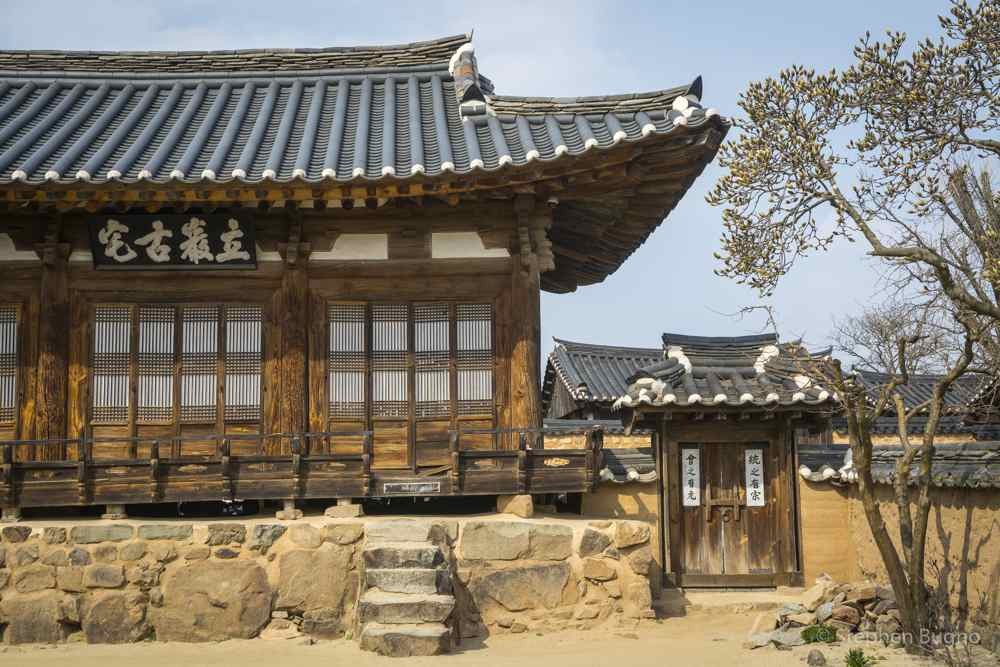 Hahoe Folk Village houses
Hahoe Folk Village houses
3. What Cultural Experiences Can Tourists Enjoy in Andong?
Andong offers a wealth of cultural experiences that allow tourists to immerse themselves in Korean traditions and folk arts. These experiences range from participating in traditional festivals to exploring local crafts and cuisine.
-
Andong Mask Dance Festival: Held annually, usually in late September or early October, the Andong Mask Dance Festival is one of Korea’s most significant cultural events. It showcases the traditional Korean mask dance-drama, known as “Talchum.”
- Talchum is a UNESCO-recognized Intangible Cultural Heritage that combines dance, music, and theater to satirize social issues and entertain audiences.
- The festival features performances by various mask dance troupes from across Korea and other countries.
- Visitors can participate in mask-making workshops, learn traditional dance steps, and enjoy street performances.
- The Andong Mask Dance Festival provides insight into Korean folk traditions and social commentary.
-
Hahoe Mask Dance Drama: Performed regularly at Hahoe Folk Village, the Hahoe Mask Dance Drama is a unique form of Korean folk theater that dates back to the Goryeo Dynasty.
- The drama features masked characters who satirize the aristocracy and address social issues.
- Performances take place in the village’s traditional setting, enhancing the cultural experience.
- The Hahoe Mask Dance Drama is an essential part of Andong’s cultural heritage and a highlight for visitors.
-
Traditional Craft Workshops: Andong is known for its traditional crafts, including hemp cloth weaving, paper making, and woodworking.
- Visitors can participate in workshops to learn these crafts from local artisans.
- These hands-on experiences provide a deeper appreciation for Korean craftsmanship.
- Workshops often include the opportunity to create and take home your own handmade items.
-
Andong Cuisine: Andong offers unique culinary experiences that reflect the region’s distinctive flavors.
- Andong Jjimdak: This signature dish features braised chicken with vegetables, noodles, and a spicy sauce.
- Andong Soju: A traditional distilled liquor made from rice, Andong Soju is known for its smooth taste.
- Visitors can explore local restaurants and markets to sample these and other regional specialties.
- According to local culinary experts, Andong’s cuisine reflects its agricultural traditions and cultural heritage.
-
Confucian Cultural Programs: Andong’s Confucian academies, such as Dosan Seowon and Byeongsan Seowon, offer cultural programs that provide insight into Confucian philosophy and traditions.
- These programs may include lectures on Confucianism, calligraphy workshops, and traditional tea ceremonies.
- Visitors can learn about the principles of Confucianism and its influence on Korean society.
- Experiencing these programs enriches visitors’ understanding of Korean culture and history.
Participating in these cultural experiences allows tourists to connect with Andong’s heritage on a deeper level. From festivals to crafts and cuisine, Andong offers a wide range of opportunities for cultural immersion. SIXT.VN can assist with arranging transportation, accommodations, and access to these unique cultural activities, ensuring a memorable and enriching visit to Andong.
4. What Natural Attractions Surround Andong?
Andong is surrounded by natural attractions that offer a serene escape from the city’s historical sites and cultural activities. The region’s mountains, rivers, and parks provide opportunities for outdoor adventures and relaxation.
-
Nakdong River: The Nakdong River, Korea’s longest river, flows around Andong and plays a significant role in the region’s natural beauty.
- The river’s scenic banks offer opportunities for walking, cycling, and picnicking.
- Boat tours along the Nakdong River provide stunning views of the surrounding landscapes.
- The Nakdong River is also important for its ecological value, supporting diverse plant and animal life.
- According to the Korea Environment Institute, the Nakdong River’s preservation is vital for maintaining the region’s biodiversity.
-
Mount Bongjeong: Located near Andong, Mount Bongjeong is a popular destination for hiking and enjoying panoramic views of the surrounding countryside.
- The mountain features several trails that cater to different fitness levels.
- At the summit, visitors can see the Bongjeongsa Temple, a historic Buddhist temple known for its serene atmosphere.
- Mount Bongjeong offers a refreshing escape into nature and a chance to experience Korea’s mountainous landscape.
-
Imha Lake: Created by the Imha Dam, Imha Lake is a large artificial lake that provides recreational opportunities and scenic views.
- Visitors can enjoy boating, fishing, and watersports on the lake.
- The surrounding area offers hiking trails, parks, and picnic spots.
- Imha Lake is a popular destination for families and outdoor enthusiasts.
-
Andong Botanical Garden: The Andong Botanical Garden showcases a diverse collection of plants and flowers, providing a tranquil environment for visitors.
- The garden features themed sections, including a traditional Korean garden, a rose garden, and a medicinal plant garden.
- Educational programs and guided tours are available for those interested in learning about botany and horticulture.
- The Andong Botanical Garden is a place for nature lovers to appreciate the beauty and diversity of plant life.
-
Jusanji Pond: Located near Andong, Jusanji Pond is a picturesque reservoir surrounded by ancient willow trees.
- The pond is known for its mystical atmosphere, especially during foggy mornings.
- It has been featured in Korean movies and TV dramas, attracting visitors seeking its scenic beauty.
- Jusanji Pond offers a tranquil setting for photography and nature walks.
These natural attractions near Andong provide a perfect complement to the city’s cultural and historical sites. Whether you’re interested in hiking, boating, or simply enjoying the scenery, Andong’s natural surroundings offer something for everyone. SIXT.VN can help you plan excursions to these natural destinations, providing transportation and local insights to enhance your experience.
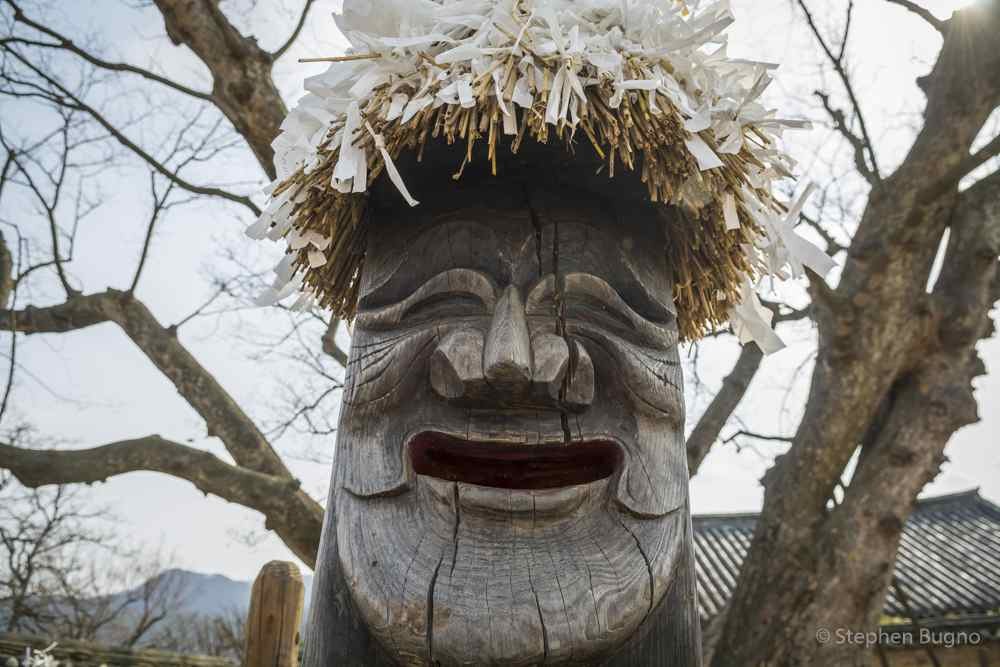 Scenic Hahoe Folk Village
Scenic Hahoe Folk Village
5. How Can You Experience Authentic Local Cuisine in Andong?
Experiencing authentic local cuisine is an integral part of any visit to Andong. The city offers a range of culinary delights that reflect its regional flavors and cultural heritage.
-
Andong Jjimdak: This is Andong’s most famous dish, consisting of braised chicken, vegetables, cellophane noodles, and a spicy sauce.
- Served in a large platter, it’s typically shared among diners.
- The dish is flavorful and savory, combining the spiciness of the sauce with the tenderness of the chicken.
- Many restaurants in Andong specialize in Jjimdak, each offering their unique variations.
-
Andong Soju: Andong Soju is a traditional distilled liquor made from rice.
- It’s known for its smooth taste and high alcohol content.
- Andong Soju has a long history, dating back to the Joseon Dynasty.
- Visitors can visit local distilleries to learn about the production process and sample different varieties.
-
Heotjesabap: This is a traditional Korean dish that originated in Andong.
- It’s a type of bibimbap (mixed rice) that was originally prepared for ancestral rites.
- The dish includes a variety of vegetables, meats, and sauces, all mixed together in a bowl of rice.
- Heotjesabap is known for its balanced flavors and nutritional value.
-
Salted Mackerel: Andong is known for its salted mackerel, which is a local specialty.
- The mackerel is salted and dried, then grilled or fried before serving.
- It has a unique flavor and is often eaten with rice and other side dishes.
- The tradition of salting mackerel dates back to the Joseon Dynasty, when it was a way to preserve the fish for transportation.
-
Local Markets: Visiting Andong’s local markets is a great way to experience the city’s culinary culture.
- The Andong Central Market offers a variety of local produce, snacks, and street food.
- Visitors can sample traditional Korean dishes, buy local ingredients, and interact with vendors.
- Exploring the markets provides insight into the daily life and culinary traditions of Andong.
-
Traditional Restaurants: Andong has numerous traditional restaurants that serve authentic Korean cuisine.
- These restaurants often feature traditional architecture and decor, enhancing the dining experience.
- Visitors can try a variety of local dishes, from stews and soups to grilled meats and vegetables.
- Many restaurants use locally sourced ingredients, ensuring the freshness and authenticity of the food.
To truly experience Andong’s local cuisine, try visiting restaurants recommended by locals and exploring the city’s markets. Don’t hesitate to try dishes that are unique to the region. SIXT.VN can provide recommendations for the best local eateries and arrange culinary tours to help you discover Andong’s gastronomic treasures.
6. What Are Some Lesser-Known Gems in Andong Worth Exploring?
While Andong is famous for its UNESCO World Heritage sites and cultural festivals, the city also has several lesser-known gems that are worth exploring for a more unique and authentic experience.
-
The House of Yi Yook-sa: This small museum is dedicated to Yi Yook-sa, a poet and independence activist who resisted Japanese colonial rule. The museum features exhibits about his life, poetry, and contributions to the Korean independence movement. It provides insight into a significant figure in Korean history and literature.
-
Manhyu Jeongsa: This is a secluded Buddhist hermitage located in the mountains near Andong. It offers a peaceful and meditative environment, away from the crowds. Visitors can explore the temple grounds, admire the traditional architecture, and enjoy the natural beauty of the surrounding forest.
-
Gosan Seowon: While Dosan Seowon and Byeongsan Seowon are more well-known, Gosan Seowon is another Confucian academy in Andong that offers a tranquil and historically rich experience. It was established to honor the Confucian scholar, Lee Jeon. Its well-preserved buildings and serene setting provide a glimpse into the educational and philosophical traditions of the Joseon Dynasty.
-
Andong Folk Museum: Unlike the larger national museums, the Andong Folk Museum focuses specifically on the local traditions and customs of the Andong region. It showcases exhibits about traditional clothing, tools, and artifacts, offering a comprehensive look at the region’s folk culture.
-
The Village of Seonseong Hyun: This village, while less famous than Hahoe, provides an intimate look at traditional Korean architecture and rural life. Visitors can wander through the village, observe the traditional houses, and interact with the local residents. This offers a more personal experience of Korean heritage.
-
Yonggungsa Temple: Located near Andong, Yonggungsa Temple is a historic Buddhist temple that is known for its beautiful architecture and serene atmosphere. It offers a place for quiet reflection and appreciation of Korean Buddhist art and culture.
Exploring these lesser-known attractions in Andong provides a deeper and more nuanced understanding of the city’s history, culture, and natural beauty. SIXT.VN can assist in arranging transportation and guided tours to these hidden gems, ensuring a memorable and enriching travel experience.
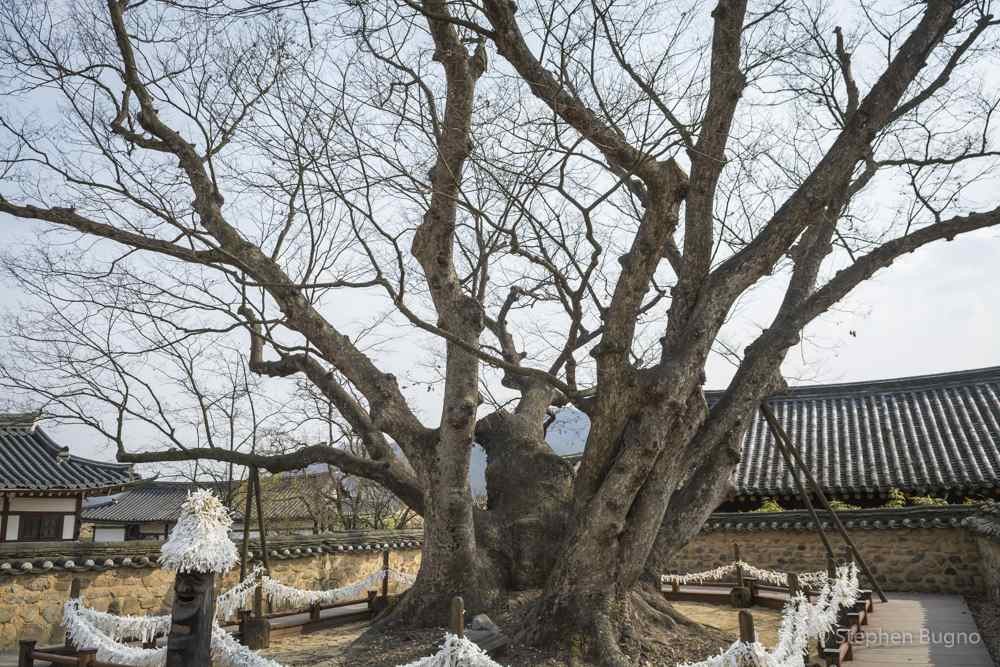 Traditional architecture of Andong
Traditional architecture of Andong
7. What Are the Best Times to Visit Andong for Optimal Experiences?
Choosing the best time to visit Andong can significantly enhance your travel experience, whether you are interested in cultural festivals, natural beauty, or pleasant weather.
-
Spring (April – May): Spring is an excellent time to visit Andong due to the mild temperatures and blooming flowers. The landscapes are vibrant, making it ideal for exploring outdoor attractions such as the Nakdong River and the surrounding mountains.
- The average temperature in spring ranges from 10°C to 20°C (50°F to 68°F).
- Cherry blossoms and other spring flowers create picturesque scenery.
- Spring is a great time for hiking and enjoying nature.
-
Autumn (September – October): Autumn is another optimal time to visit Andong, with cool, crisp air and stunning fall foliage. The colorful landscapes provide a beautiful backdrop for exploring historical sites and participating in cultural events.
- The average temperature in autumn ranges from 10°C to 20°C (50°F to 68°F).
- The Andong Mask Dance Festival typically takes place in late September or early October.
- Autumn is perfect for hiking and enjoying the fall colors.
-
Summer (June – August): Summer in Andong can be hot and humid, with occasional monsoon rains. However, it’s still a good time to visit if you don’t mind the weather and want to experience the lush greenery and vibrant cultural events.
- The average temperature in summer ranges from 25°C to 30°C (77°F to 86°F).
- Be prepared for occasional rain showers.
- Summer is a good time for exploring indoor attractions and attending local festivals.
-
Winter (November – March): Winter in Andong is cold and dry, with temperatures often dropping below freezing. While it may not be the most popular time to visit, winter can offer a unique and peaceful experience, especially if you enjoy winter landscapes and cultural traditions.
- The average temperature in winter ranges from -5°C to 5°C (23°F to 41°F).
- Snowfall can create beautiful winter scenery.
- Winter is a good time for visiting indoor attractions and experiencing traditional Korean winter customs.
To make the most of your visit to Andong, consider your interests and preferences when choosing the time of year. Spring and autumn offer pleasant weather and beautiful scenery, while summer and winter can provide unique cultural experiences despite the less favorable weather conditions. SIXT.VN can provide up-to-date information on weather conditions, events, and seasonal attractions to help you plan your trip accordingly.
8. What Accommodation Options Are Available in Andong?
Andong offers a range of accommodation options to suit various preferences and budgets, from traditional Korean guesthouses to modern hotels.
-
Traditional Korean Guesthouses (Hanoks): Staying in a hanok is a unique way to experience Korean culture. These traditional houses offer a glimpse into the past with their wooden structures, ondol (underfloor heating), and serene courtyards.
- Hahoe Village Hanoks: Several hanoks within Hahoe Folk Village offer overnight stays, providing an immersive cultural experience.
- Andong City Hanoks: You can find hanoks in Andong city that offer a quieter, more secluded experience.
- Hanoks typically offer traditional Korean breakfasts and cultural activities.
-
Modern Hotels: Andong has several modern hotels that provide comfortable amenities and convenient locations.
- Andong Grand Hotel: This hotel offers well-appointed rooms, on-site dining, and business facilities.
- CM Park Hotel: Known for its modern decor and convenient location near the city center.
- Modern hotels often provide amenities such as fitness centers, restaurants, and free Wi-Fi.
-
Guesthouses and Budget Accommodations: For budget-conscious travelers, Andong has a variety of guesthouses and budget hotels.
- These accommodations offer basic amenities at affordable prices.
- Guesthouses often have communal areas where guests can interact and share travel tips.
- Budget accommodations can be found both in the city center and in the surrounding areas.
-
Resorts and Pensions: If you prefer a more secluded and relaxed setting, consider staying at a resort or pension outside the city.
- These accommodations offer spacious rooms, beautiful scenery, and outdoor activities.
- Resorts and pensions are ideal for families and couples seeking a peaceful retreat.
- They often have amenities such as swimming pools, hiking trails, and barbecue facilities.
When choosing accommodation in Andong, consider your budget, preferences, and the location you want to stay in. Hanoks provide a cultural experience, while modern hotels offer convenience and comfort. Budget accommodations are great for saving money, and resorts provide a relaxing escape. SIXT.VN can help you find and book the perfect accommodation for your trip, ensuring a comfortable and enjoyable stay in Andong.
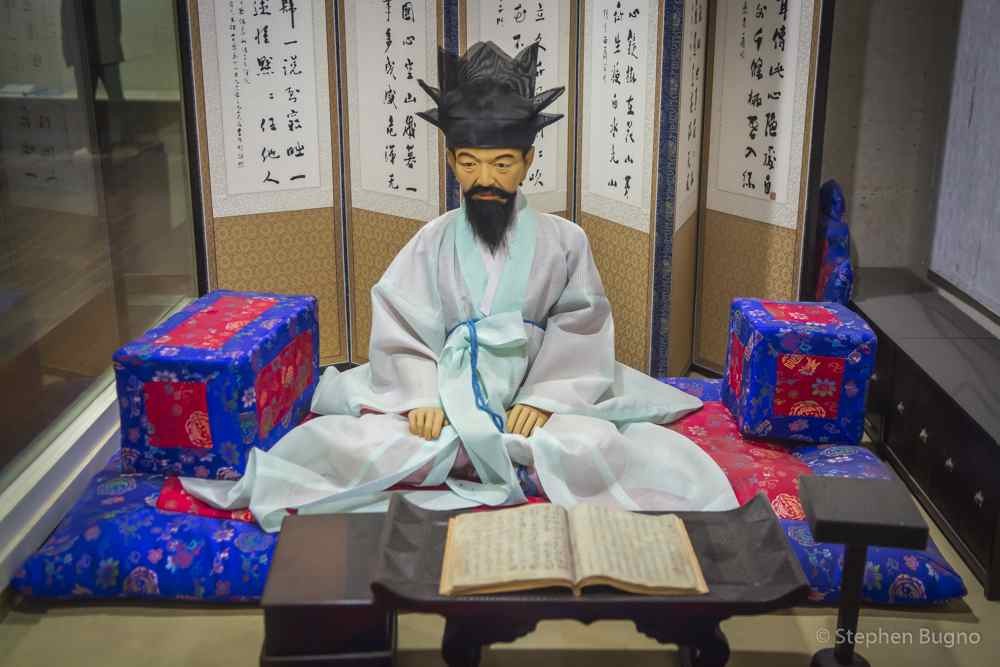 Andong folk architecture
Andong folk architecture
9. What Transportation Options Are Available for Getting Around Andong?
Navigating Andong is relatively easy, with a variety of transportation options available for tourists.
-
Local Buses: Andong has an extensive bus network that connects the city center with its surrounding areas and attractions.
- Buses are an affordable way to get around, with fares typically ranging from 1,500 to 2,000 KRW (approximately $1.20 to $1.60 USD).
- Bus schedules and routes are available at bus stops and online.
- Buses are a convenient option for reaching popular attractions such as Hahoe Folk Village and Dosan Seowon.
-
Taxis: Taxis are readily available in Andong and provide a convenient way to travel, especially for shorter distances or when traveling in groups.
- Taxi fares start at around 3,300 KRW (approximately $2.70 USD), with additional charges based on distance and time.
- Taxis can be hailed on the street or booked through a taxi app.
- Taxis are a good option for traveling to destinations that are not easily accessible by bus.
-
Car Rentals: Renting a car provides the flexibility to explore Andong and its surrounding areas at your own pace.
- Several car rental companies operate in Andong, offering a variety of vehicles to choose from.
- You will need an international driving permit to rent a car in Korea.
- Car rentals are a great option for visiting natural attractions and exploring the countryside.
-
Bicycles: Andong is a bike-friendly city, with dedicated bike lanes and rental services available.
- Renting a bicycle is a great way to explore the city center and enjoy the scenic views along the Nakdong River.
- Bike rentals are available at several locations throughout the city.
- Bicycles are an eco-friendly and healthy way to get around Andong.
-
Walking: Walking is a great way to explore the city center and discover hidden gems.
- Many of Andong’s historical sites and cultural attractions are located within walking distance of each other.
- Walking allows you to soak in the atmosphere and appreciate the details of the city.
- Wear comfortable shoes and be prepared for some hills and stairs.
When choosing transportation in Andong, consider your budget, destinations, and preferences. Buses are affordable, taxis are convenient, car rentals offer flexibility, and bicycles provide an eco-friendly option. SIXT.VN can assist with arranging transportation services, including car rentals and taxi bookings, to ensure a smooth and hassle-free travel experience.
10. What Travel Tips Should You Keep in Mind When Visiting Andong?
Keeping a few travel tips in mind can help you make the most of your visit to Andong and ensure a smooth and enjoyable experience.
-
Learn Basic Korean Phrases: While many people in tourist areas speak English, knowing some basic Korean phrases can enhance your interactions with locals.
- “Annyeonghaseyo” (Hello)
- “Gamsahamnida” (Thank you)
- “Eolmaeyo?” (How much?)
- “Hwajangsil eodie isseoyo?” (Where is the restroom?)
-
Carry Cash: While credit cards are widely accepted in Andong, it’s always a good idea to carry some cash for smaller establishments and street vendors.
- Korean Won (KRW) is the local currency.
- ATMs are available throughout the city for withdrawing cash.
-
Respect Local Customs: Korea has a rich cultural heritage, and it’s important to respect local customs and traditions.
- Remove your shoes before entering homes and traditional establishments.
- Use both hands when giving or receiving items, especially from elders.
- Avoid loud talking or disruptive behavior in public places.
-
Dress Appropriately: When visiting temples and other religious sites, dress modestly.
- Avoid wearing revealing clothing.
- Cover your shoulders and knees.
- Remove your hat when entering temples.
-
Stay Hydrated: Especially during the summer months, it’s important to stay hydrated by drinking plenty of water.
- Bottled water is readily available at convenience stores and supermarkets.
- Carry a reusable water bottle and refill it throughout the day.
-
Use Public Transportation: Andong has an efficient public transportation system, including buses and taxis.
- Learn the bus routes and schedules.
- Use a taxi app to book taxis easily.
-
Be Prepared for Weather: Check the weather forecast before you go and pack accordingly.
- Bring sunscreen and a hat for sunny days.
- Pack layers for cooler evenings.
- Carry an umbrella or raincoat during the rainy season.
-
Plan Ahead: Research the attractions you want to visit and plan your itinerary in advance.
- Book accommodations and tours ahead of time, especially during peak season.
- Check the opening hours and admission fees for attractions.
By keeping these travel tips in mind, you can ensure a smooth, respectful, and enjoyable visit to Andong. SIXT.VN can provide further assistance with planning your trip, offering local insights and practical advice to enhance your travel experience.
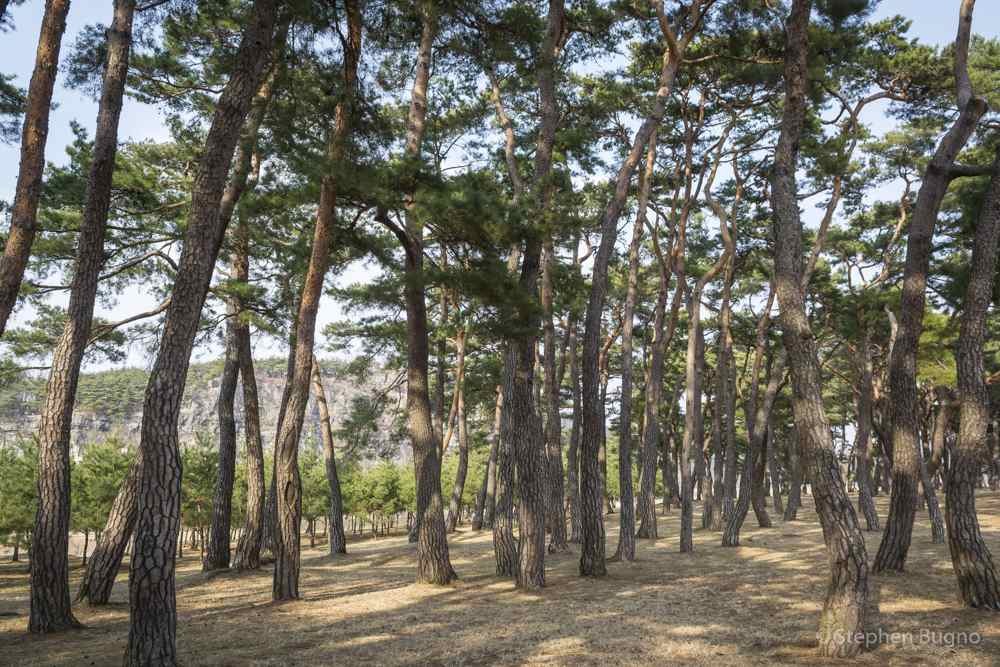 Andong rural setting
Andong rural setting
Andong Tourism FAQs
-
Is Andong worth visiting?
Yes, Andong is definitely worth visiting for its well-preserved cultural heritage, historical sites, and unique local experiences. It’s a great destination for those interested in exploring traditional Korean culture.
-
What is Andong famous for?
Andong is famous for Hahoe Folk Village, Andong Mask Dance Festival, Andong Jjimdak, and its Confucian academies. These attractions offer a deep dive into Korean history and culture.
-
How many days should I spend in Andong?
Ideally, you should spend 2-3 days in Andong to fully explore its main attractions and cultural experiences. This allows you to visit Hahoe Folk Village, Dosan Seowon, and enjoy the local cuisine.
-
What is the best time to visit Andong?
The best times to visit Andong are spring (April-May) and autumn (September-October) for pleasant weather and beautiful scenery. These seasons provide the most comfortable conditions for exploring the city.
-
How do I get to Andong from Seoul?
You can get to Andong from Seoul by KTX high-speed train, which takes about 2-3 hours. Alternatively, you can take a bus from Seoul, which takes approximately 3-4 hours.
-
Is Andong easily accessible by public transport?
Yes, Andong is accessible by public transport. The city has a well-connected bus network, and taxis are readily available. The KTX train also connects Andong to major cities like Seoul and Busan.
-
What should I wear when visiting temples in Andong?
When visiting temples in Andong, dress modestly. Avoid wearing revealing clothing and cover your shoulders and knees out of respect for the religious site.
-
Are there guided tours available in Andong?
Yes, guided tours are available in Andong for major attractions like Hahoe Folk Village and Dosan Seowon. These tours can provide valuable insights into the history and culture of the sites.
-
What local food should I try in Andong?
When in Andong, you should definitely try Andong Jjimdak (braised chicken with vegetables and noodles) and Andong Soju (traditional distilled liquor). These are local specialties that offer a taste of Andong’s culinary heritage.
-
Is English widely spoken in Andong?
While English is spoken in tourist areas, it’s not as widely spoken as in larger cities like Seoul. Learning a few basic Korean phrases can be helpful for smoother interactions with locals.
Ready to embark on an unforgettable journey through Andong? Let SIXT.VN be your trusted companion, providing seamless travel solutions tailored to your needs. From arranging transportation and accommodations to offering expert guidance on local attractions and cultural experiences, SIXT.VN ensures a hassle-free and enriching adventure.
Don’t let planning challenges hold you back – contact SIXT.VN today and unlock the wonders of Andong!
- Comprehensive travel packages designed to suit your preferences
- Convenient airport transfer services for stress-free arrivals and departures
- Handpicked hotel selections offering comfort and convenience
- Expert advice on must-see attractions and hidden gems
- Customizable tour options to delve deeper into Andong’s rich culture
Contact us now:
- Address: 260 Cau Giay, Hanoi, Vietnam
- Hotline/Whatsapp: +84 986 244 358
- Website: SIXT.VN
Let SIXT.VN transform your Andong adventure into a cherished memory!



